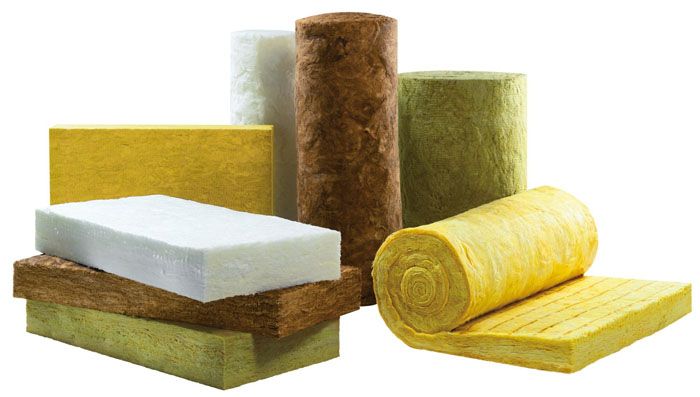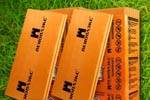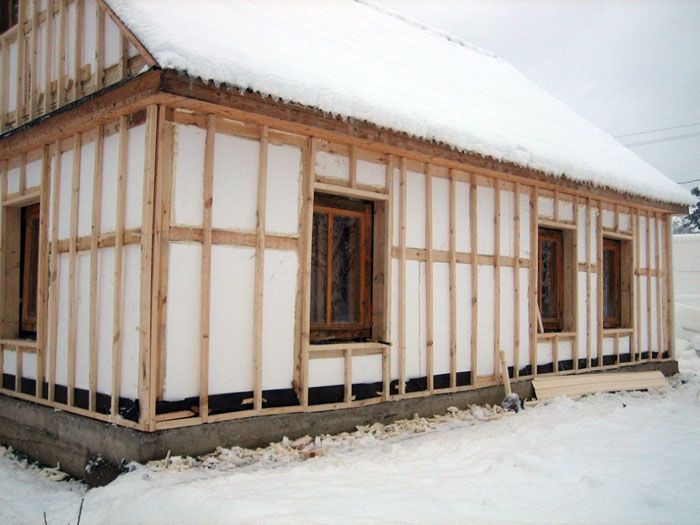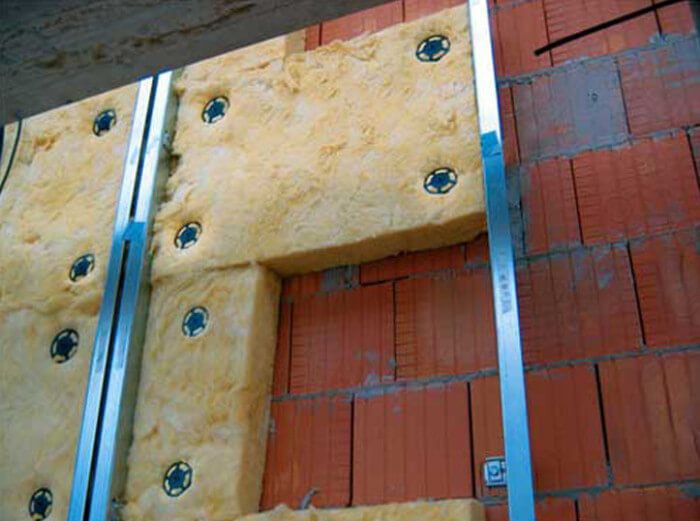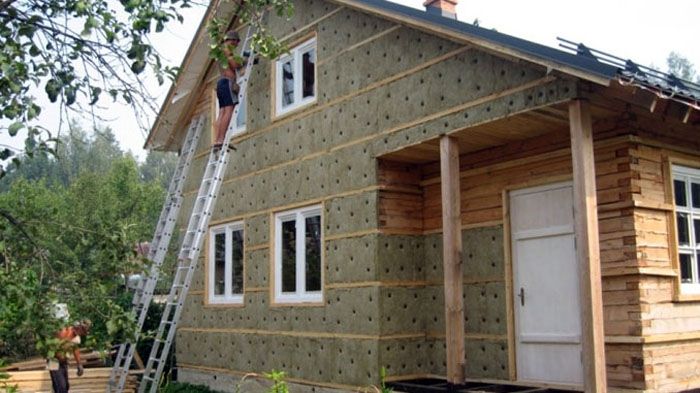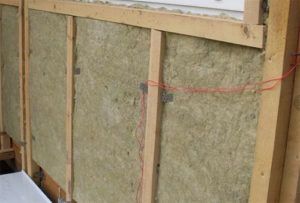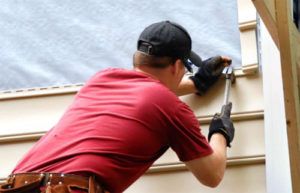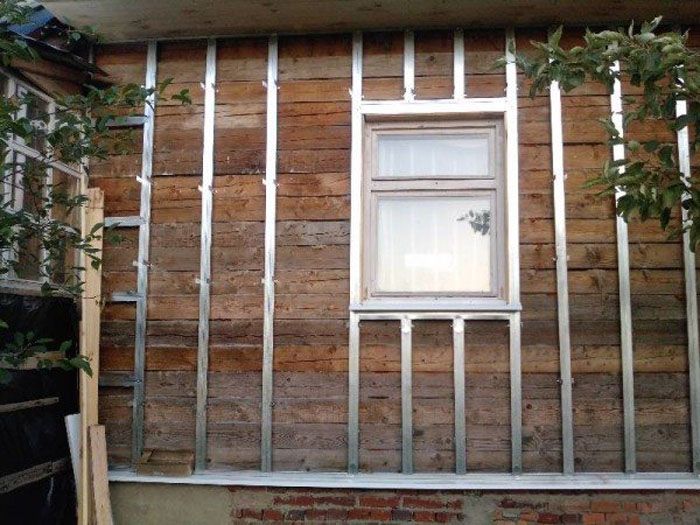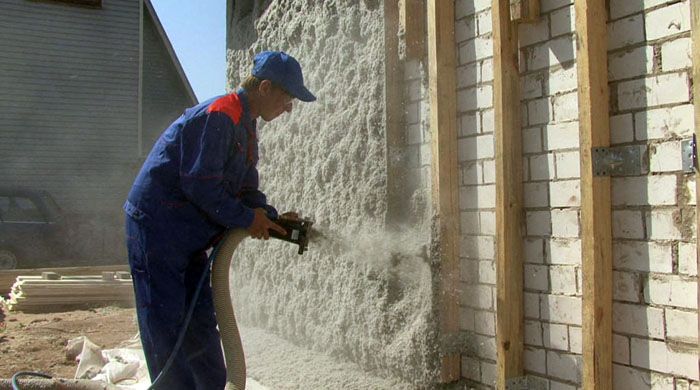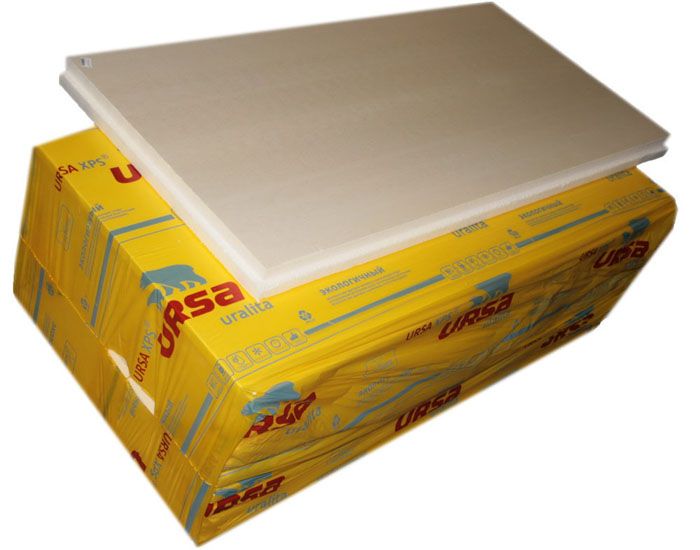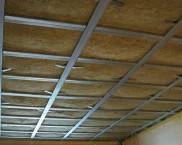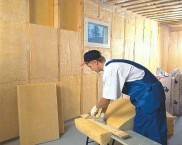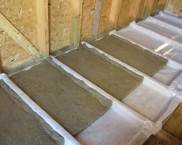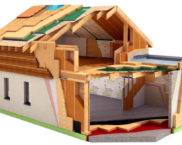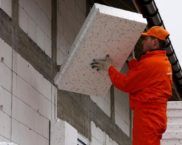Insulation for the walls of the house outside under siding - how to choose and do it yourself
In recent years, such a building material as siding has become a very popular solution for decorating the facade of a house, both among individual developers and construction companies. The interest in this material is due to its ease of use and a wide range of color solutions, allowing to give even an old building a new and modern look. When finishing the facade with siding, it becomes possible to improve the thermal characteristics of building structures, which is achieved by installing additional insulation, which is laid outside along the walls of the building. Insulation for the walls of the house outside for siding: requirements and characteristics, an overview of leading manufacturers and prices for the most popular materials, as well as how to choose for walls of various designs and do it yourself - the topic of this article in the online magazine homemaster.techinfus.com/en/.
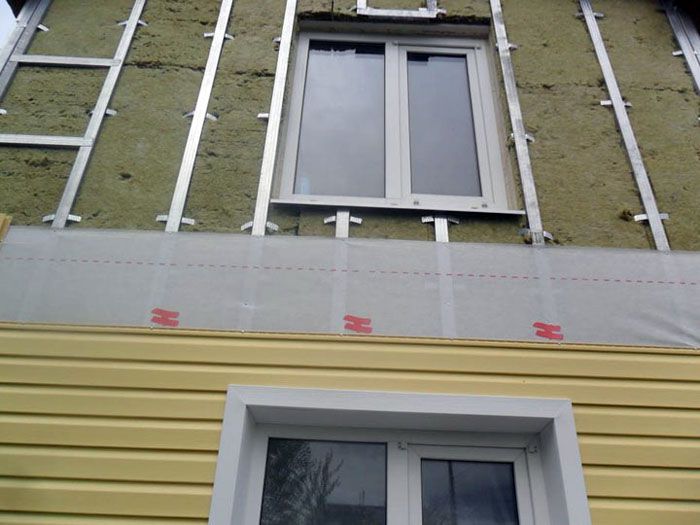
Warming by laying insulation outside the building with the subsequent laying of siding is a fairly common method when solving problems related to reducing the cost of heat supply
The content of the article [Hide]
- 1 Requirements for insulation for siding for the walls of the house
- 2 Characteristics of insulation for the facade for siding
- 3 Review of leading manufacturers
- 4 What insulation is better for siding
- 5 Features of DIY wall insulation for siding
- 6 How much is insulation for siding - price overview
- 7 Video: house insulation with a siding facade
Requirements for insulation for siding for the walls of the house
When choosing a heater with laying it under siding, the main indicators that you should pay attention to are:

Density is one of the important indicators when choosing a heater, since in the case of "fluidity" of the material, there is a high probability of the appearance of gaps between the sheets, contributing to the loss of thermal energy
Currently, manufacturers produce various types of materials that can be used to insulate building envelopes.
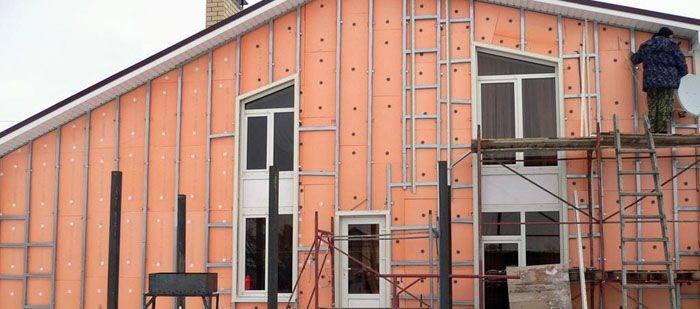
Regardless of the material of the walls and the type of insulation, when using siding, it is always assumed that the frame device is used for its installation
Characteristics of insulation for the facade for siding
On the domestic market, there is a wide selection of heaters that can be used to insulate the facade of a building with the subsequent installation of siding: mineral wool and polystyrene foam (expanded polystyrene), glass wool and foam, as well as polyurethane foam.
Mineral wool
Mineral or stone wool - this is the most widespread and demanded material used for wall insulation for siding. Mineral wool is produced in the form of slabs or rolls of various standard sizes. Its distinctive features are affordable cost, ease of use, and good thermal performance.
This type of insulation is produced by domestic and foreign manufacturers and is widely represented on the building materials market in our country.
The main technical characteristics of mineral wool are shown in the following table:
| Thermal conductivity coefficient, W / m2 × ˚K | Vodopo absorption,% | Vapor permeability, m2 × h × Pa | Flammability class | Density, kg / m3 |
|---|---|---|---|---|
| 0,031 – 0,12 | 70 | 0,3 – 0,6 | NG / G1 / G2 / G3 / G4 | 50-225 |
Styrofoam
Polyfoam or its modern modification polystyrene foam is a popular type of insulation used for siding. Low cost and ease of use are the main advantages of this material, but its flammability somewhat reduces its overall positive assessment.
The main technical characteristics of the foam are shown in the following table:
| Thermal conductivity coefficient, W / m2 × ˚K | Vodopoglo schenia,% | Steampro value, m2 × h × Pa | Flammability class | Density, kg / m3 |
|---|---|---|---|---|
| 0,039 – 0,05 | 3,0 | 0,05 | G1 / G2 / G3 / G4 | 60 – 220 |
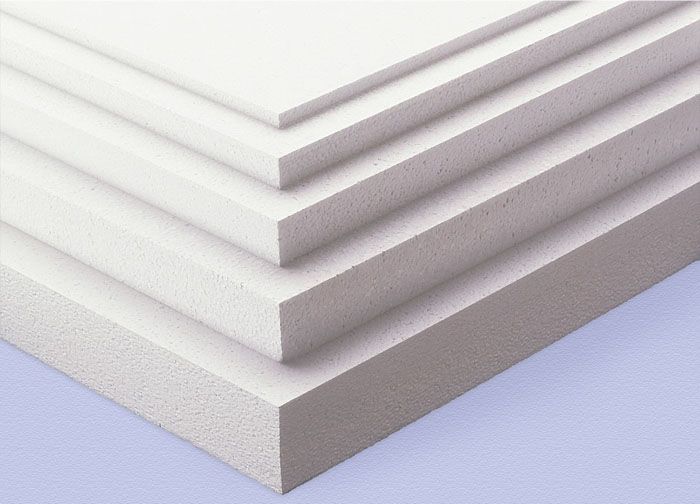
Polyfoam is available in various standard sizes, both in width and length, and in thickness, which is convenient when used in different climatic regions of our country
Glass wool
Glass wool is similar in appearance and form to mineral wool, but the differences lie in the components used in its production.
The main technical characteristics of glass wool are shown in the following table:
| Thermal conductivity coefficient, W / m2 × ˚K | Vodopoglo schenia,% | Steampro value, m2 × h × Pa | Flammability class | Density, kg / m3 |
|---|---|---|---|---|
| 0,03 – 0,052 | 70 | 0,01 – 0,6 | NG / G1 | 11-50 |
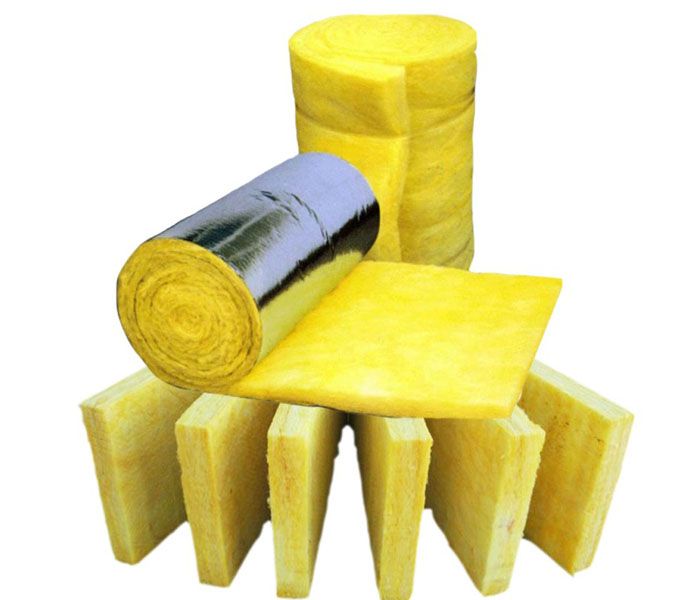
Glass wool is produced in the same form as mineral wool, but when using it, it is necessary to comply with more stringent requirements for the rules of safe work
Penoplex
Penoplex is a type of extruded polystyrene foam, which is quite in demand when insulating walls for siding.
The advantages of this material are the following indicators:
Among the disadvantages it should be noted: flammability and the ability to emit harmful substances during combustion.
Basic technical characteristics of penoplex:
| Thermal conductivity coefficient, W / m2 × ˚K | Vodopoglo schenia,% | Steampro value, m2 × h × Pa | Flammability class | Density, kg / m3 |
|---|---|---|---|---|
| 0,028 – 0,033 | 0,2 – 0,4 | 1,2 – 2,0 | G1 / G2 / G3 / G4 | 20-48 |

Penoplex is produced by almost all companies operating in the market of thermal engineering materials
Related article:
Polyurethane foam
This insulation is less popular among individual developers, due to the need for special equipment to apply it to the wall surface when used in a liquefied state, and a high cost when sold in a solid state.

Main technical characteristics of polyurethane foam:
| Thermal conductivity coefficient, W / m2 × ˚K | Vodopoglo schenia,% | Steampro value, m2 × h × Pa | Flammability class | Density, kg / m3 |
|---|---|---|---|---|
| 0,019 | 2,00 | 0,05 | G1 / G2 / G3 | 30-150 |
Review of leading manufacturers
As it was already written above, both domestic and foreign companies are represented in the segment of materials intended for warming houses for siding on the construction market of our country. Among them, the most popular are the following brands:
What insulation is better for siding
For walls made of different materials, you should choose different types of insulation, which is due to the physical properties of these materials, their technical characteristics.
Houses made of wood and frame type
Wooden structures "breathe", and this is one of the advantages of this building material. When insulating wooden walls for siding, mineral wool is the most demanded material.

Sometimes developers use polystyrene foam when insulating wooden walls, since it is also an affordable type of insulation. However, due to low vapor permeability and fire hazard, this material is not preferable: wooden structures are already poorly protected from fire damage.
A good solution for such structures would be the use of polyurethane foam, but, due to the high cost, this type of insulation is not used as widely as other materials.
Brick houses
To insulate brick walls, all types of insulation considered in this article can be used.
Preference for this or that material should be given on the following grounds:
Houses made of foam blocks and aerated concrete
For houses of this type, the optimal type of insulation is polyurethane foam: when applied, it slightly increases the load on the enclosing structures and the foundation, and also excludes the possibility of "cold seams" formed when using panel materials.
Mineral wool is also a good type of insulation for houses from foam blocks and aerated concrete, providing the vapor permeability necessary for such structures.
Features of DIY wall insulation for siding
Finishing the facade of a building with an insulating layer can be carried out at the stage of building a house or during its operation. The use of siding as a finish presupposes the presence of a crate or frame on which it is installed. This, in turn, determines the way the insulation is installed.

All work related to the installation of insulation on the outer walls of the house, as well as the installation of siding, can be performed by each homeowner on his own. This requires:
- Decide on the type of insulation used and calculate its amount.
- Prepare the necessary equipment and tools.
- Carry out preparatory measures of an organizational and technical nature: calculate the required thickness of the insulation and prepare the walls for installation work.
Since mineral wool is the most popular type of insulation for all types of enclosing structures, this section of the article will consider just such works. They are executed in the following sequence:
When cutting mineral wool, which is necessary for the junction of window and door openings, as well as walls of complex geometric shapes, the dimensions taken from the wall surface must be increased by several centimeters, which, when laying the insulation, will allow it to be more firmly fixed in place.
"When using metal profiles for the manufacture of the frame, the work is carried out in the same way, with the only difference that other fasteners are used to assemble it."
When constructing a facade of the "wet facade" type, when the insulation is glued to the surface of the wall, another operation is added to the process of performing the work - applying an adhesive to the surface of the insulation from the side directed towards the wall.
When using other materials, with the exception of polyurethane foam in a liquefied state, work is performed in a similar sequence.
How much is insulation for siding - price overview
The price of various materials used to insulate a house for siding varies greatly, which makes it easy to choose the one you need in a given price category. The price also depends on the region of purchase of the material and the margin of the trading company or network where the goods are purchased.
The following table shows the average price for the most demanded materials when sold through retail chains as of the third quarter of 2018.
| Category | Brand | Specifications | Cost (as of August 2018), rubles / package |
|---|---|---|---|
| Mineral wool | Isover-Classic | Length - 1170mm; Width - 610mm; Thickness - 50 mm; Package quantity - 14 pcs. | 770 |
| Category | Brand | Specifications | Cost (as of August 2018), rubles / package |
|---|---|---|---|
| Mineral wool | URSA-Terra | Length - 1000 mm; Width - 600 mm; Thickness - 50 mm; Package quantity - 10 pcs. | 550 |
| Category | Brand | Specifications | Cost (as of August 2018), rubles / package |
|---|---|---|---|
| Mineral wool | IZOVOL-Izobel P-75 | Length - 1000 mm; Width - 600 mm; Thickness - 50 mm; Package quantity - 10 pcs. | 450 |
| Category | Brand | Specifications | Cost (as of August 2018), rubles / package |
|---|---|---|---|
| Styrofoam | RosPenoplast | Length - 1000/1200/2000/3000 mm; Width - 600/1000 mm; Thickness - 10-1000 mm | 1400 - 4600 per m3 |
| Category | Brand | Specifications | Cost (as of August 2018), rubles / package |
|---|---|---|---|
| Styrofoam | PARAPLEX | Length - 1000/2000 mm; Width - 600/1000 mm; Thickness - 10-1000 mm. | 1600 - 3200 per m3 |
| Category | Brand | Specifications | Cost (as of August 2018), rubles / package |
|---|---|---|---|
| Styrofoam | Polyfoam PSK | Length - 600/1200/2000/3000 mm; Width - 1200 mm; Thickness - 20 - 600 mm | 1690 per m3 |
| Category | Brand | Specifications | Cost (as of August 2018), rubles / package |
|---|---|---|---|
| Glass wool | Isover | Length - 1170 mm; Width - 610 mm; Thickness - 50 mm; Package quantity - 14 pieces | 625 |
| Category | Brand | Specifications | Cost (as of August 2018), rubles / package |
|---|---|---|---|
| Glass wool | Knauf | Length - 1230 mm; Width - 610 mm; Thickness - 50 mm; Package quantity - 16 pcs. | 935 |
| Category | Brand | Specifications | Cost (as of August 2018), rubles / package |
|---|---|---|---|
| Glass wool | URSA | Length - 1000 mm; Width - 610 mm; Thickness - 50 mm; Package quantity - 10 pcs. | 530 |
| Category | Brand | Specifications | Cost (as of August 2018), rubles / package |
|---|---|---|---|
| Penoplex | TechnoNICOL | Length - 1185 mm; Width - 585 mm; Thickness - 50 mm. | 155 per sheet |
| Category | Brand | Specifications | Cost (as of August 2018), rubles / package |
|---|---|---|---|
| Penoplex | URSA | Length - 1250 mm; Width - 610 mm; Thickness - 50 mm; Package quantity - 7 pieces. | 1150 |
Video: house insulation with a siding facade
For those who are interested in how to insulate a house outside under siding with their own hands, the following video may be useful:




